In the ever-evolving landscape of education technology, Salesforce.org’s Education Data Architecture (EDA) stands out as a game-changer for institutions seeking a comprehensive solution for managing the entire K-20 student journey. This blog delves into the crucial aspect of setting up EDA in a higher education setting, uncovering the steps and nuances involved in creating a seamless educational architecture.
Unveiling the Customization and Flexibility of Salesforce EDA
Salesforce EDA is designed with two key principles in mind: customization for diverse educational institutions and flexibility to adapt to unique institutional needs. Educational institutions face the challenge of managing diverse data related to academic departments, programs, courses, terms, and more. The need for a unified platform that not only accommodates this complexity but also offers flexibility for customization is paramount. This blog addresses the need for a robust educational architecture and demonstrates how EDA provides a tailored solution.
Overview: Education Architecture
Academic Departments and Programs:
- Academic Department: Represents a department or college of study (e.g., English Department).
- Academic Program: Represents a program of study associated with a department (e.g., B.A. English).
Courses, Terms, and Course Offerings:
- Course: A class offered at an institution (e.g., Anatomy 101).
- Term: A period when a course is offered (e.g., Fall 2020).
- Course Offering: An instance of a course in a specific term with details like room, instructor, and dates.
The “Where & When”:
- Facility: Represents the location (where) for campus activities, like classrooms or offices.
- Time Block: Represents the period (when) during which events or classes are scheduled.
Step-by-Step Instructions: Setting Up Academic Departments and Programs
1. Create an Academic Department Account:
- Navigate to the Accounts tab in EDA.
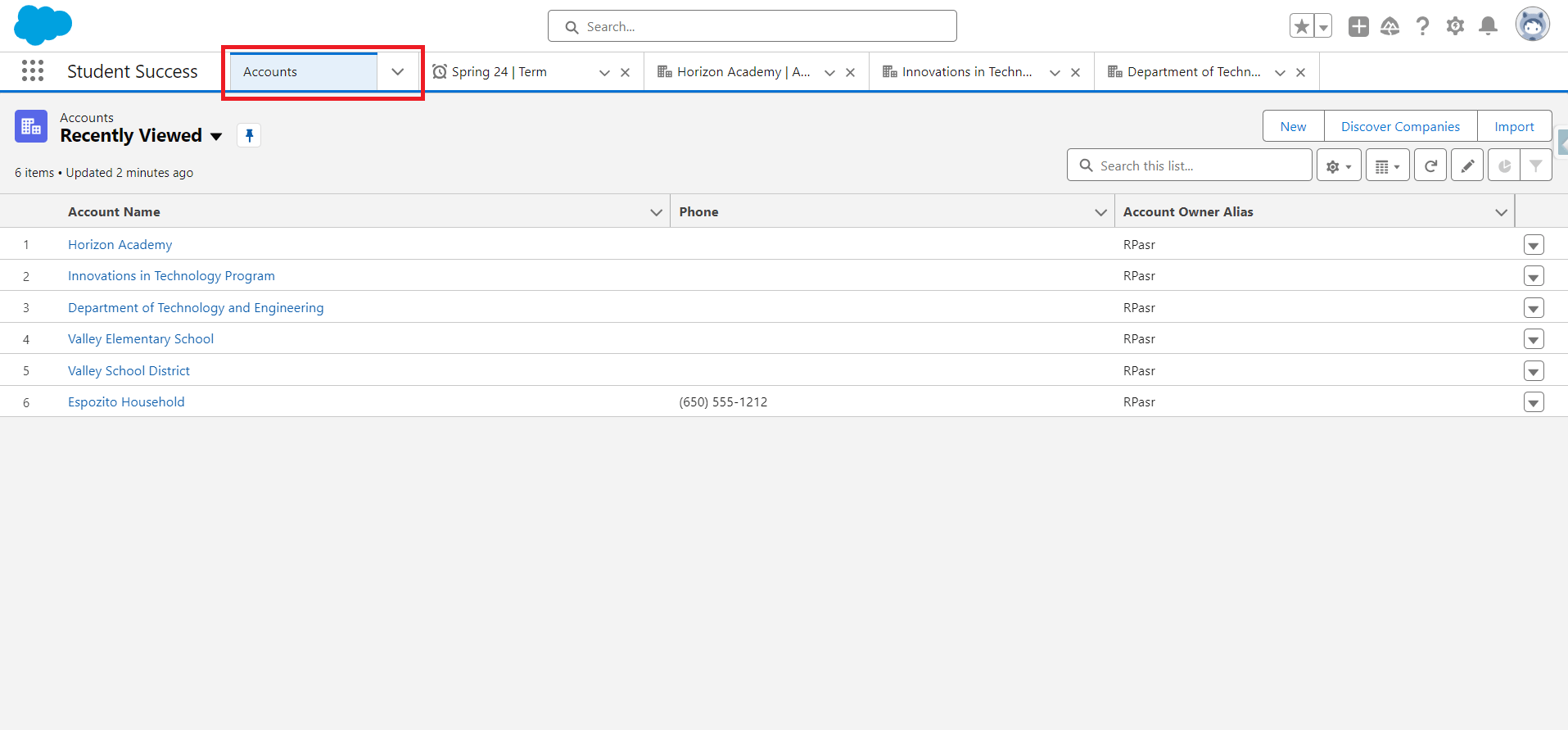
- Click new and Select the University Department record type and fill in the details.
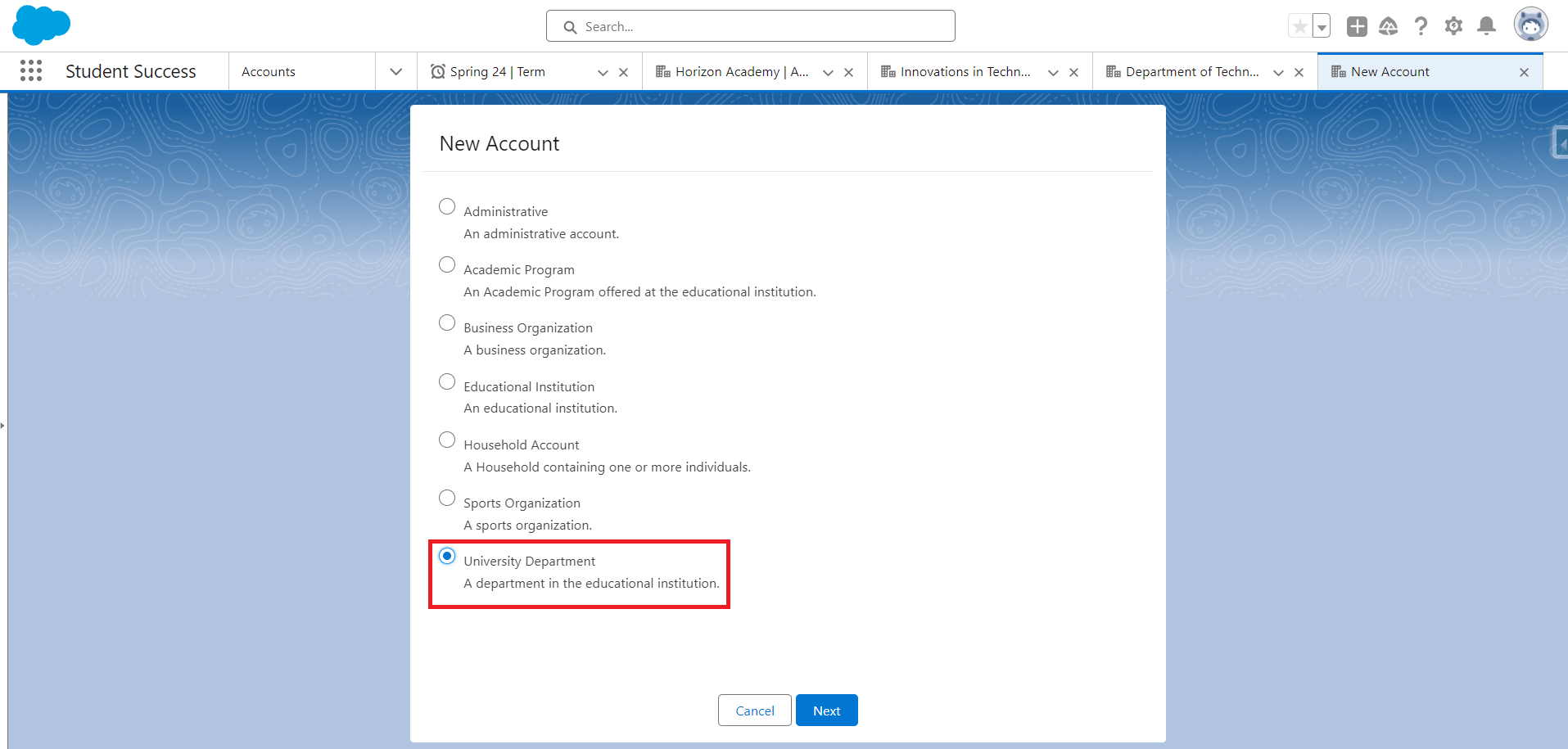
- Save the account.
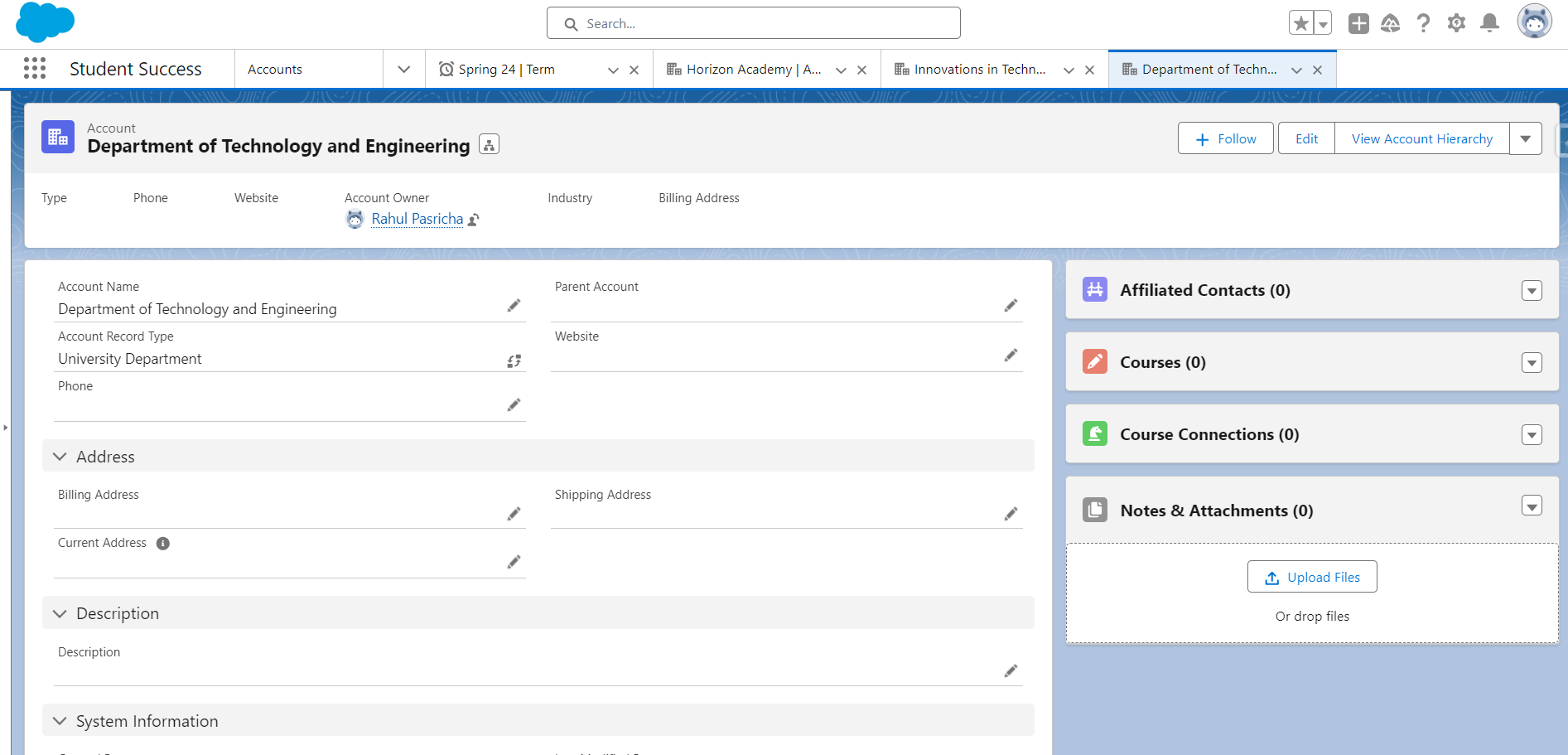
2. Create an Academic Program:
- Again, go to the Accounts tab.
- Select the Academic Program record type and provide the necessary details.
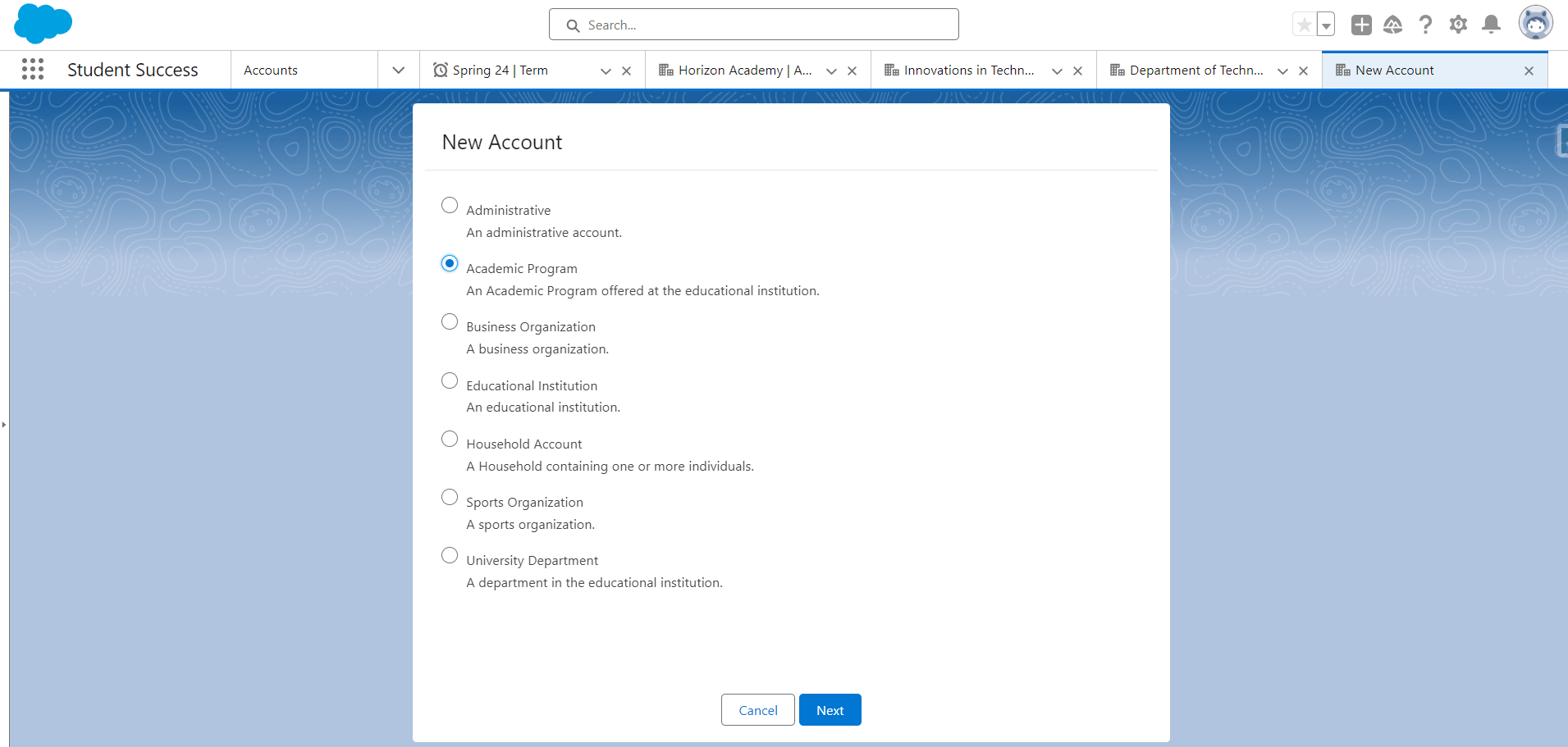
- Link the program to the respective Academic Department.
- Save the account.
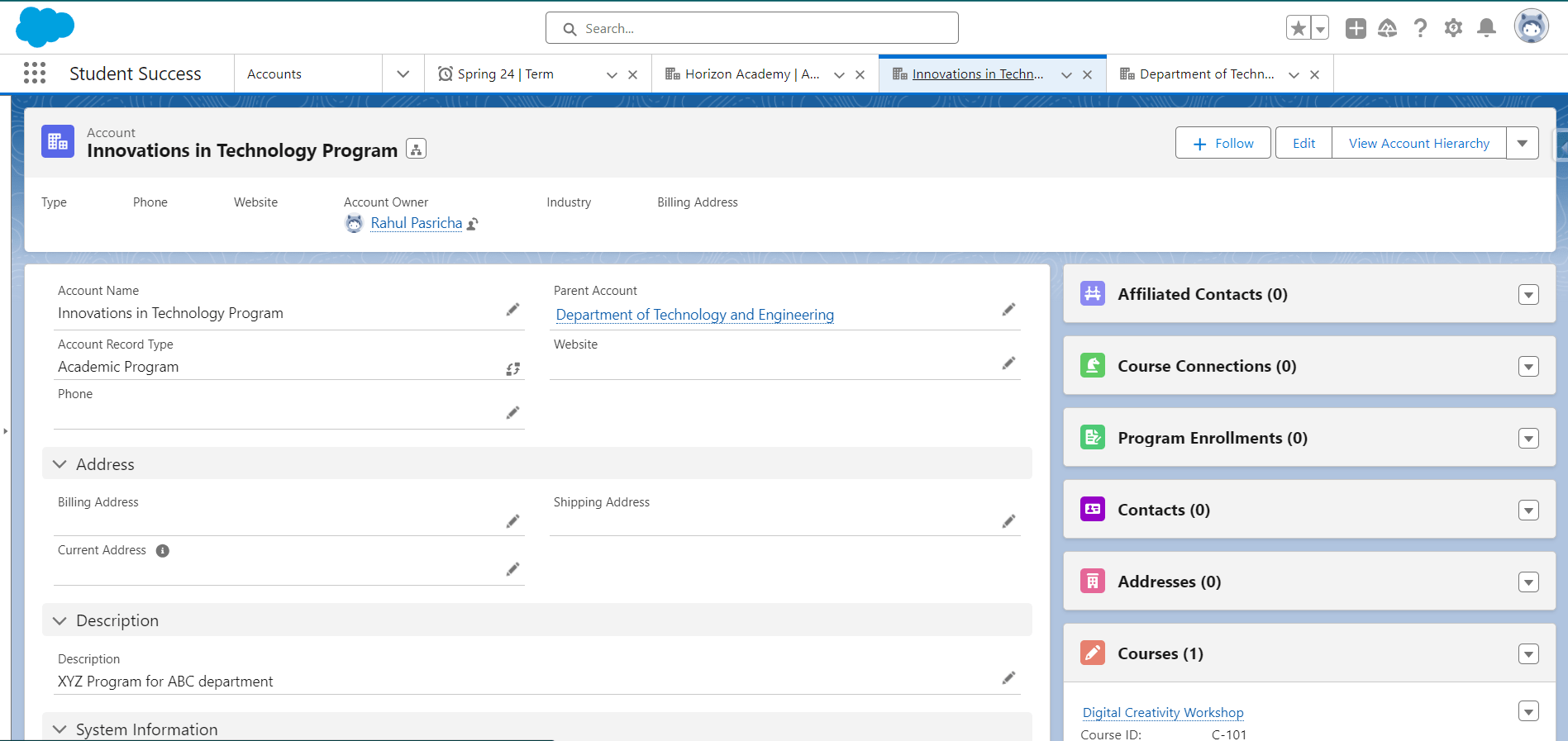
Courses, Terms, and Course Offerings
3. Create a Course:
- Access the Courses related list under the designated department(Account).
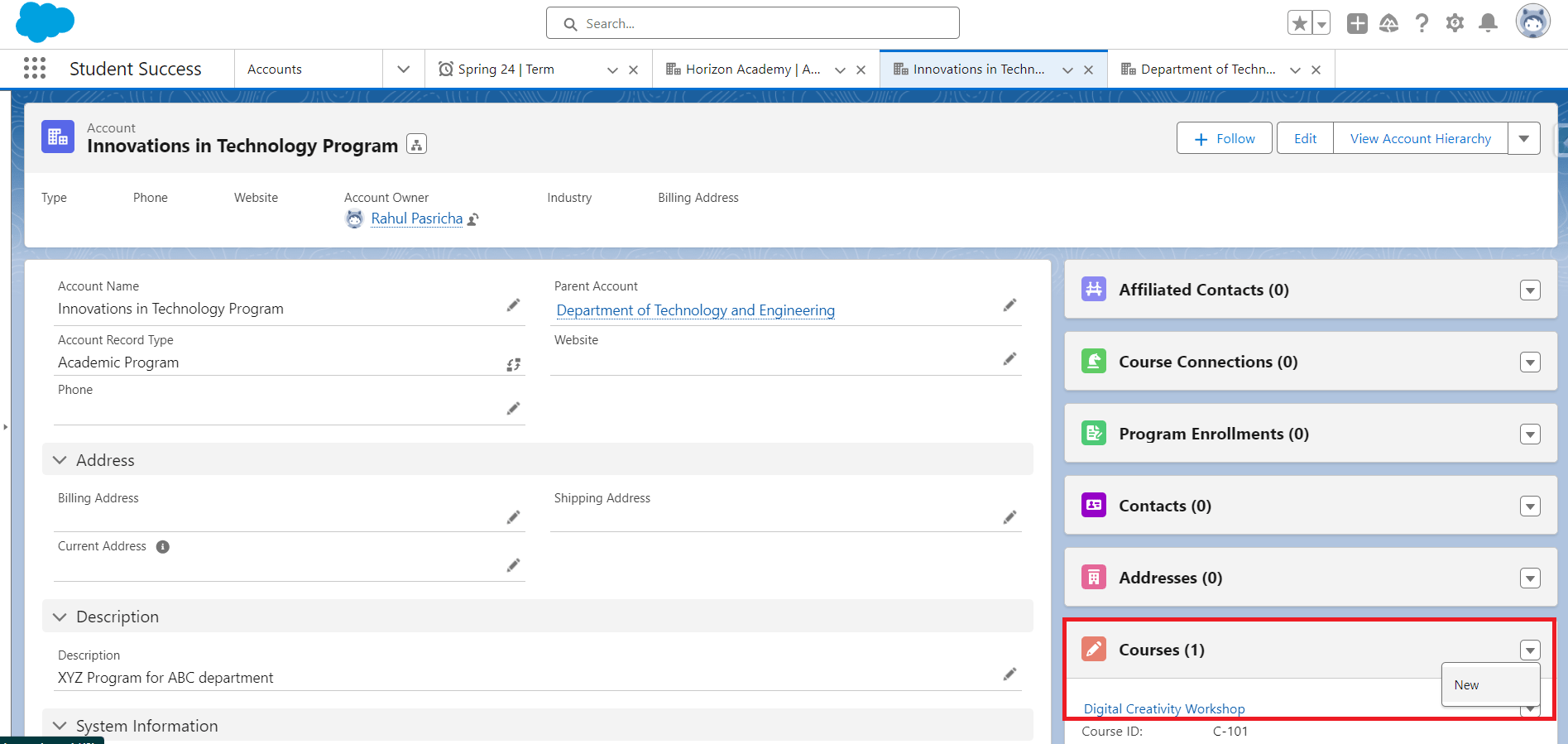
- Click on New and enter course details.
- Save the course.
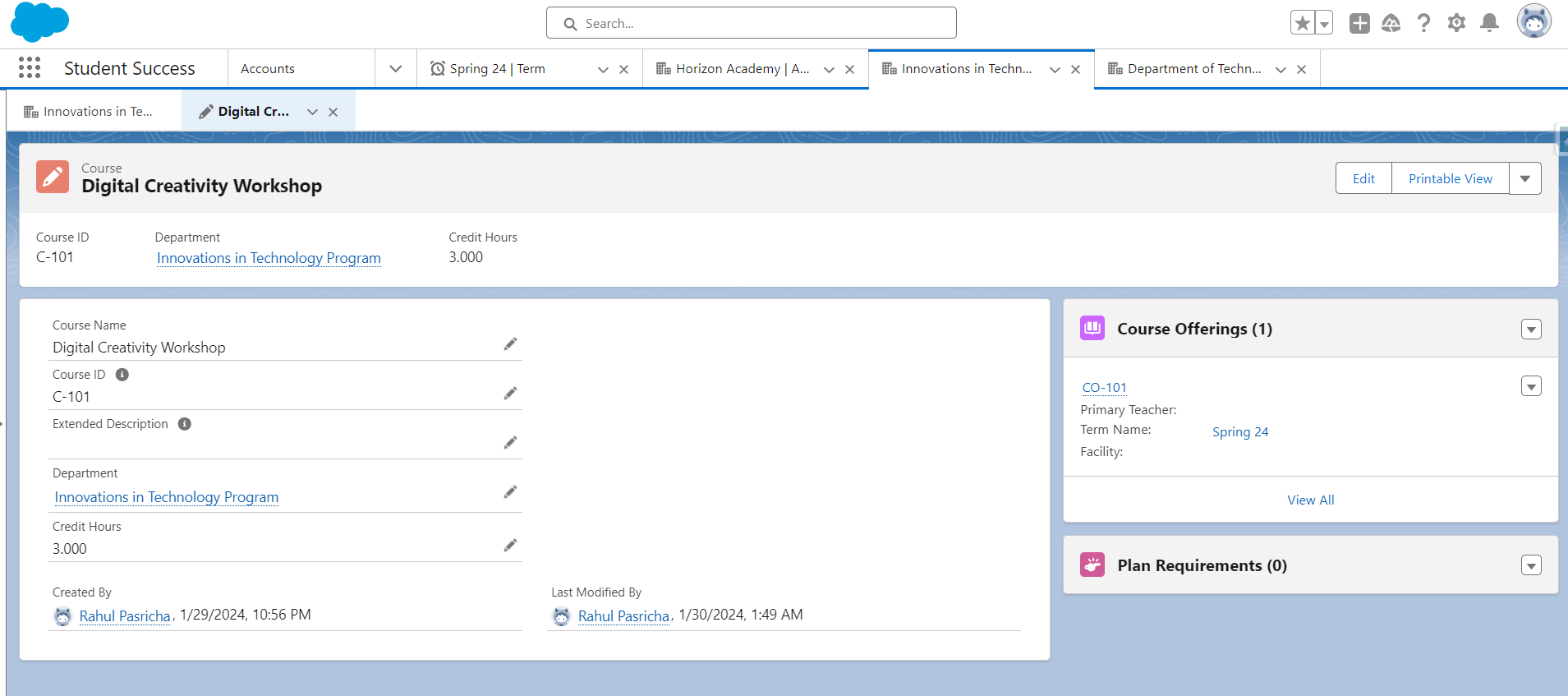
4. Create a Term:
- Go to the Terms tab in EDA.
- Click on New, provide term details, and link it to the educational institution.
- Save the term.
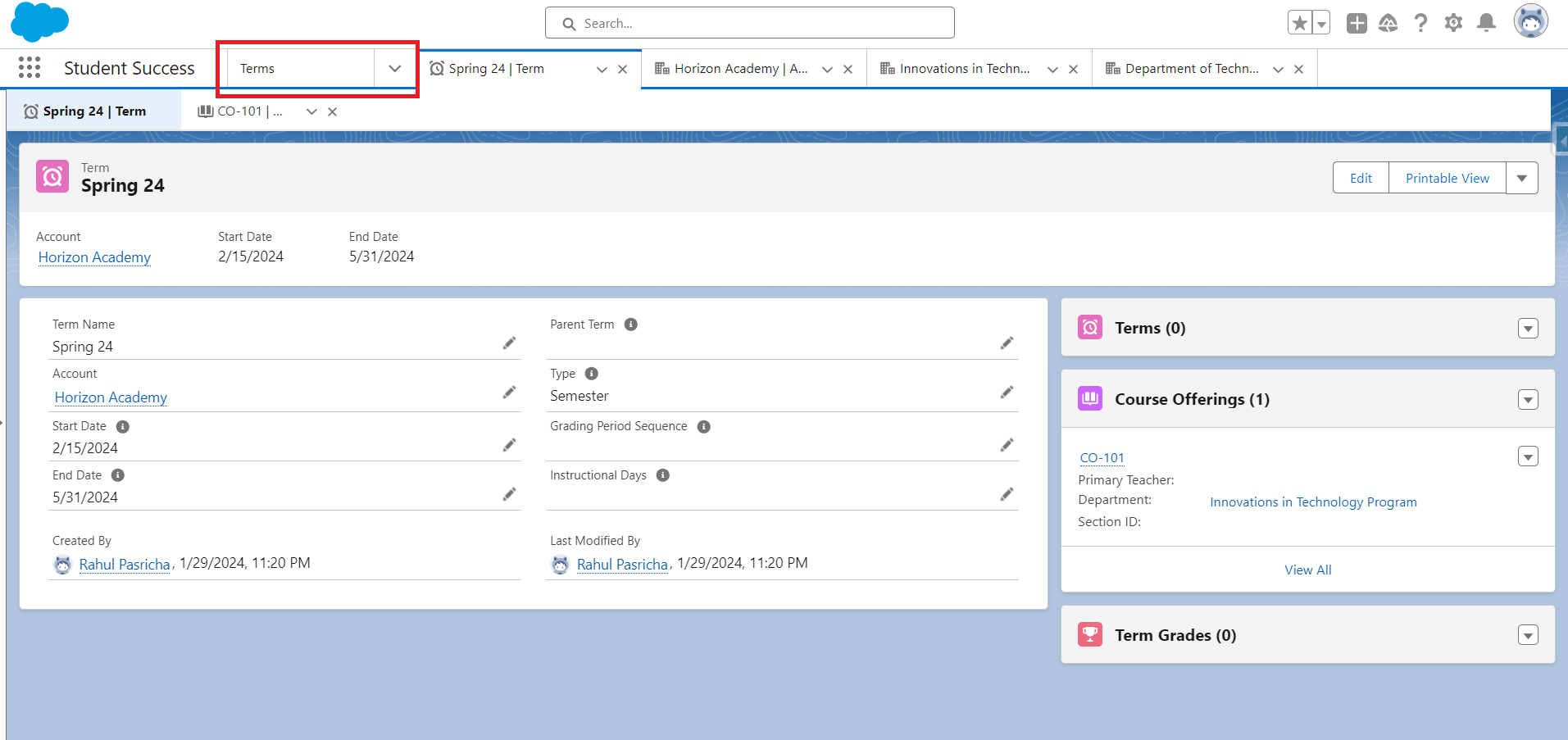
5. Create a Course Offering:
- Access the Course Offerings tab.
- Click on New, select the course and term, and provide additional details.
- Save the course offering.
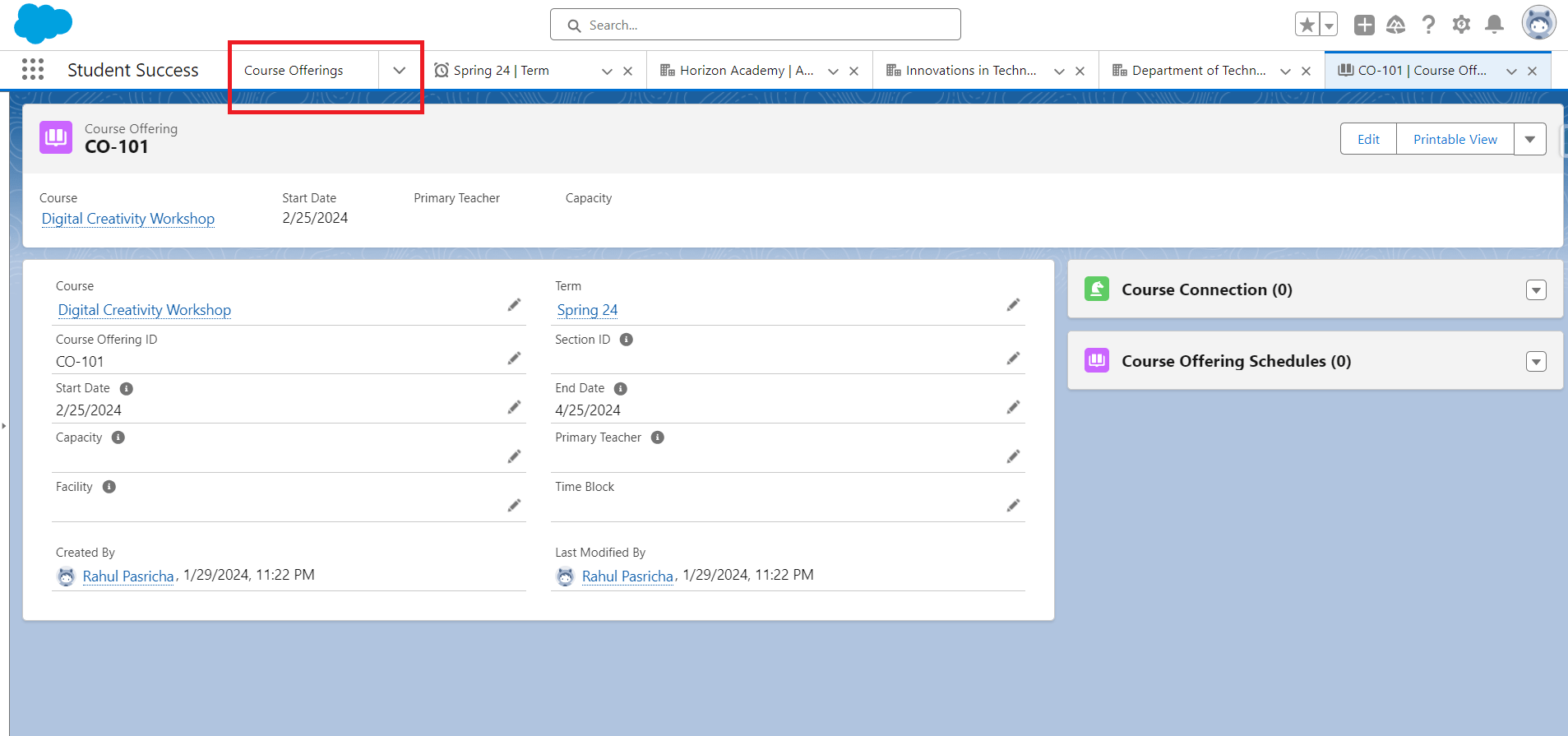
The “Where & When” are What’s Important
6. Create Facility Records:
- Navigate to the Facilities tab and click on New.
- Fill in details for each facility, including name and linkage to the educational institution.
- Save the facility records.
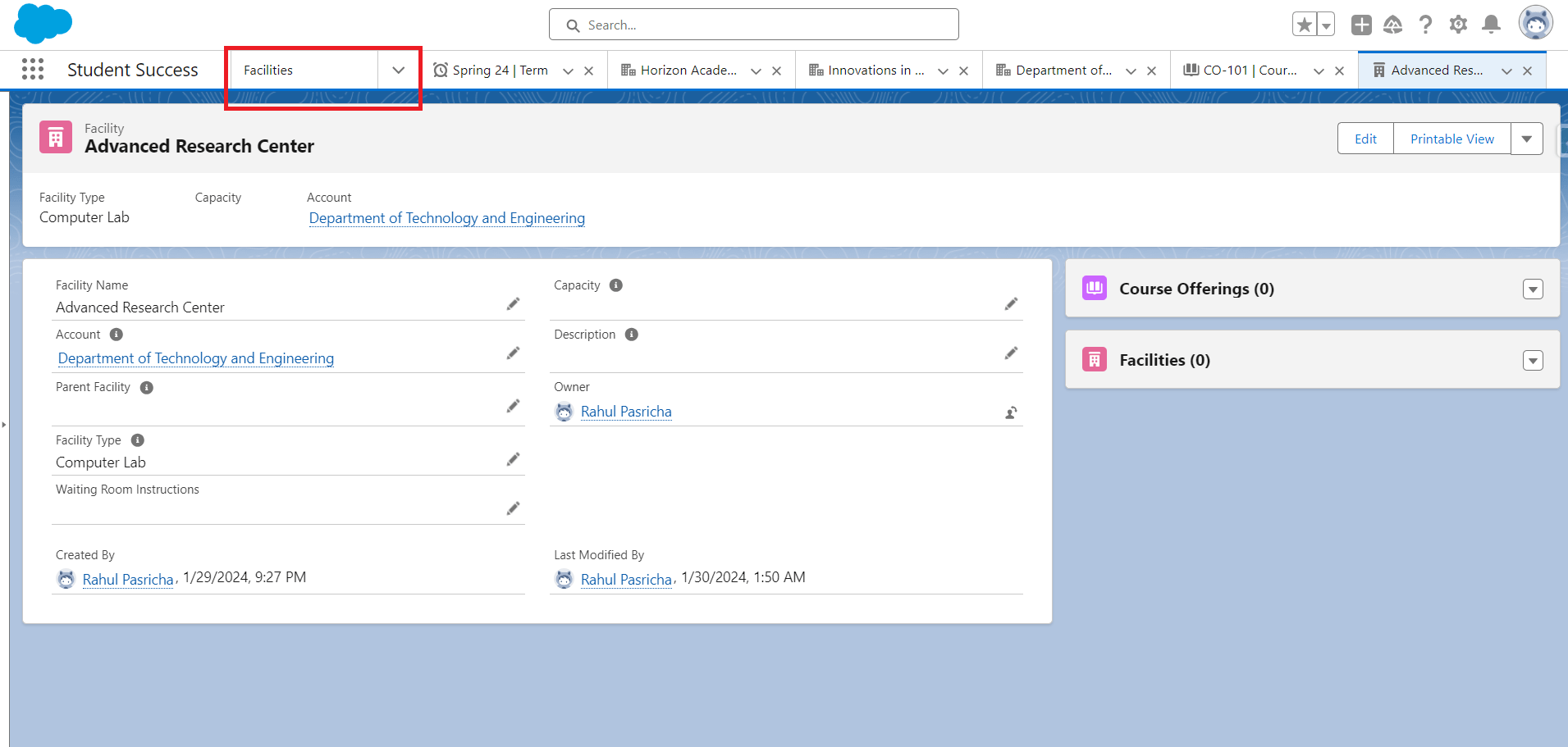
7. Create Time Block Records:
- Access the Time Blocks related list from an account.
- Click on New, provide a name, start and end times.
- Save the time block.
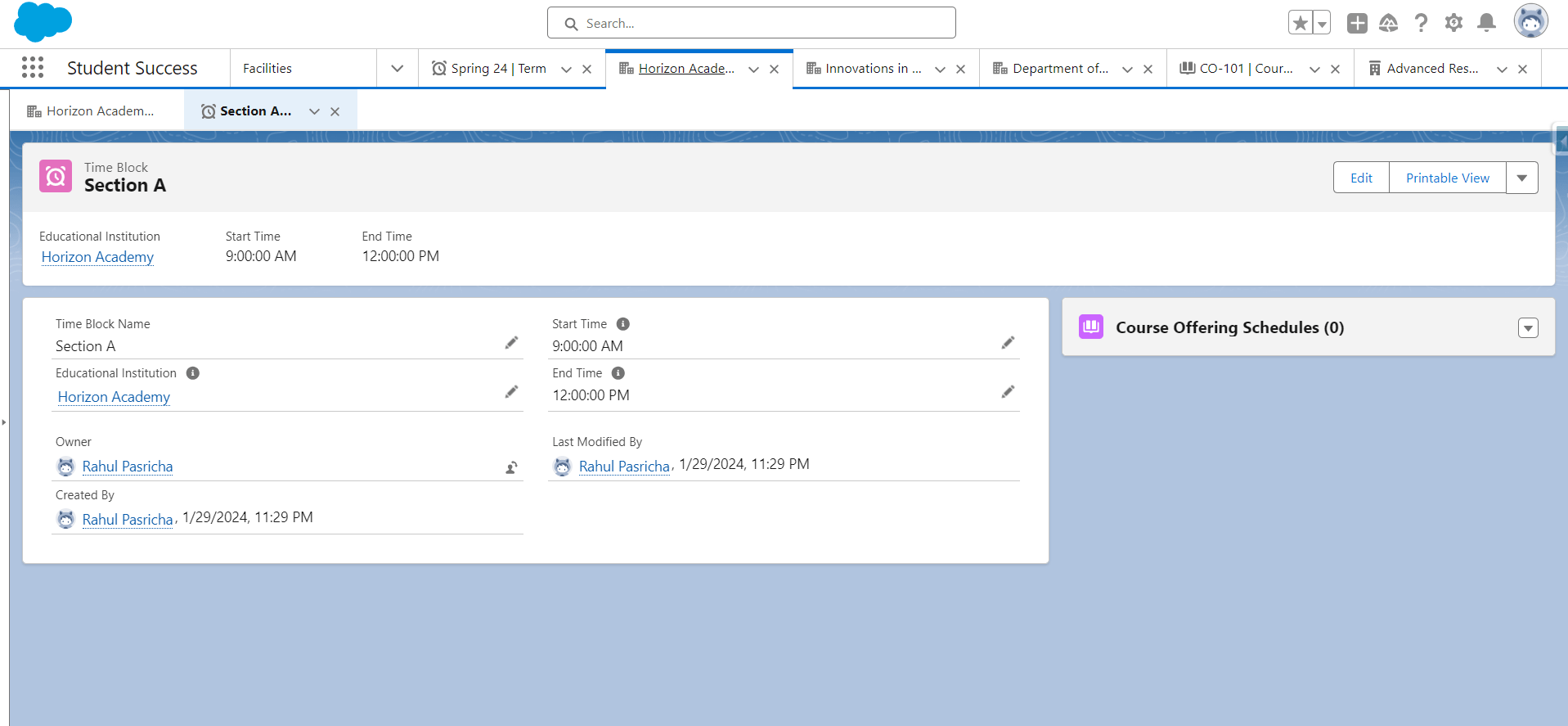
Best Practices
Consistent Record Naming: Adopt a standardized naming convention for academic departments, programs, courses, and other entities to ensure clarity and ease of navigation.
In conclusion, the meticulous implementation of Salesforce.org’s Education Data Architecture, as outlined in the results section, yields a well-connected and tailored educational infrastructure. This comprehensive setup, achieved by following step-by-step instructions and incorporating best practices, establishes a unified platform for student data management. The seamless integration of academic departments, programs, courses, terms, facilities, and time blocks forms the foundation for effective data administration.
As institutions embark on their EDA journey, it becomes evident that Salesforce.org’s Education Data Architecture stands out as a versatile and powerful tool. The illustrated approach in this blog emphasizes the importance of flexibility and customization in shaping an educational architecture that aligns with the unique needs of each institution. By leveraging the full potential of EDA, institutions can foster a connected and streamlined approach to education administration, ultimately enhancing overall efficiency and effectiveness in managing student data.
Leave A Comment